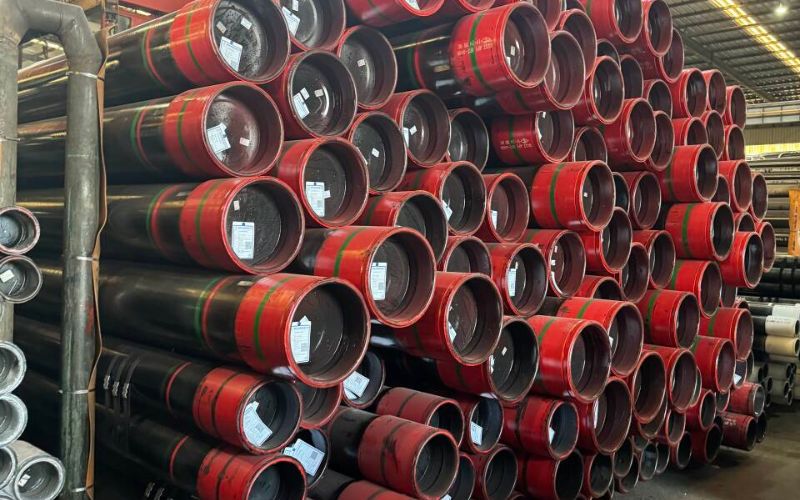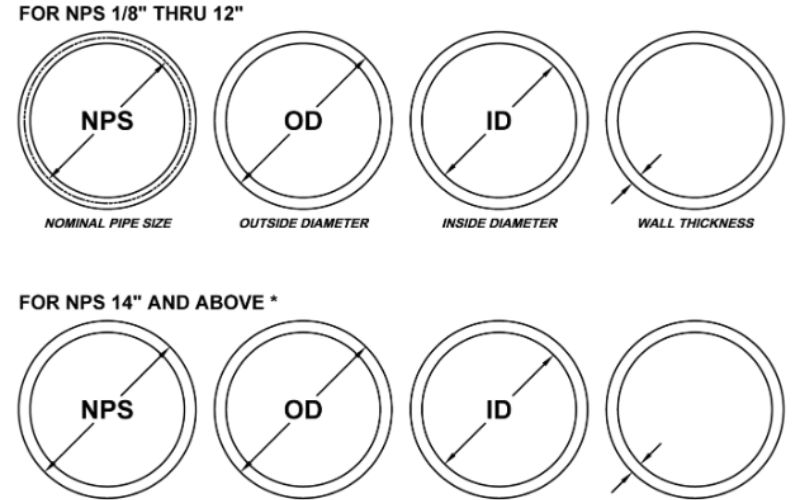Storing liquid products safely and efficiently is one of the critical considerations for industries ranging from oil and gas to chemical processing and beyond. API 650 is the foremost reference governing the aboveground storage tanks, including welded steel tanks, for ensuring the highest standards. Being a global standard, it prescribes minimum requirements in design, construction, inspection, and safety and provides the industry with a solid basis for the retention of its liquid assets. This article aims to shed light on the catalytic aspects of API 650, elucidate its implications, practical applications, and its contribution to the improvement of operational excellence. If you are a professional in the industry or an engineer, you will find some valuable insight into perhaps one of the most important resources in the engineering field. Stay with us as we explore all about the essentials and further discuss why API 650 is still a trusted name in tank construction.
Introduction to API 650
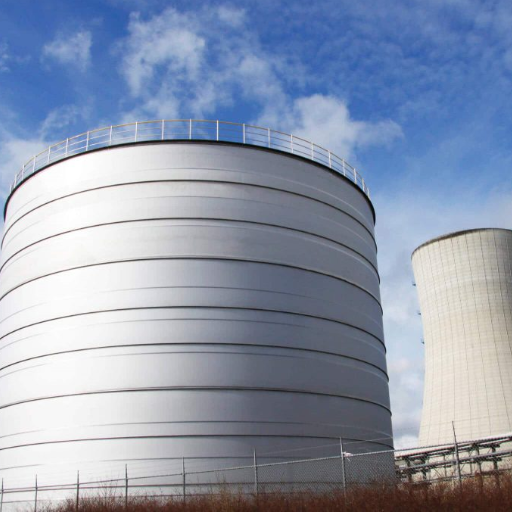
API 650 is one very well-known and often-utilized standard developed by America’s Petroleum Institute (API) for the design, fabrication, and inspection of welded storage tanks designed for storing liquids such as crude oil, chemicals, and water. Through this standard, tanks will be constructed to satisfy the necessary safety, quality, and performance criteria while observing recognized best practices within the industry. This standard applies to above-ground tanks of all sizes and different capacities and provides regulations on materials, welding, structural integrity, and testing procedures. Implementing API 650 allows engineers and manufacturers to make sure these tanks are durable and reliable while conforming to industry standards.
Overview of API 650
The API 650 standard provides a comprehensive framework for the design and construction of welded steel storage tanks, crucial for industries handling liquids like oil, chemicals, and water. It incorporates stringent guidelines to ensure safety, structural reliability, and long-term durability. Below are the key features and technical highlights of the API 650 standard:
- Design Requirements
API 650 outlines detailed parameters for tank dimensions, wall thickness, and internal pressure to accommodate different storage needs. Tanks compliant with API 650 are typically designed to withstand pressures up to 2.5 psi at the top of the tank.
- Material Selection
This standard specifies the use of high-quality steel materials, such as carbon steel and low-alloy steel, which provide exceptional strength and durability. Materials used must meet strict performance tests to ensure suitability for various environmental conditions.
- Welding Standards
API 650 emphasizes rigorous welding specifications, employing techniques such as full-penetration welds to enhance structural integrity. Post-weld inspections, including radiographic and ultrasonic testing, are also mandated to detect potential flaws.
- Corrosion Protection
To extend the lifespan of tanks, API 650 integrates guidelines for corrosion-resistant coatings and linings. Additional recommendations include the implementation of cathodic protection systems for environments prone to severe chemical or moisture exposure.
- Inspection and Testing
API 650 requires comprehensive testing procedures, such as hydrostatic testing, to verify tank integrity under operational conditions. Regular inspections throughout the tank’s life cycle ensure continuous compliance and safety.
- Seismic and Wind Considerations
Tanks constructed to API 650 standards account for site-specific environmental factors such as seismic activity, wind loads, and snow loads. This ensures resilience in challenging operating conditions.
- Capacity and Sizing
The functionality of API 650 tanks covers a wide range of applications, with capacities ranging from a few thousand gallons to over 5 million gallons. This versatility makes them suitable for various industries requiring large-scale liquid storage solutions.
Importance of API 650 in the Industry
The designing and construction of types of aboveground storage tanks lean heavily on API 650 as a major standard to sustain uniformity and reliability for safety among different industries. These types of tanks are widely utilized in industries that handle bulk liquids, for example, the oil and gas, chemicals, water treatment, and agriculture industries. Since API 650 has stringent provisions for design and material requirements, this standard serves to enhance the safety of the operations since it somewhat lessens incidents of tank failure resulting in an environmental incident or toxic leakage.
Apart from capacity, API 650 tanks are very versatile with regard to storage needs. For instance, the oil and gas industry uses these tanks for storing crude oils, refined petroleum products, and other hydrocarbons in the range of millions of gallons. While for the chemical industry, it would be safer to store corrosive or hazardous materials with various lining and coating alternatives that are allowed by the standard.
The storage tanks industry, which likely owes much of its existence to installations conforming to API 650 standards, is predicted to hit $20 billion by 2027, growing steadily in annual terms. The rapid increase in the demand for reliable storage infrastructure in emerging markets accentuates the need for such sound engineering practices. New materials such as advanced steel alloys and coatings being incorporated into the new-age palate of materials have further renewed the relevance of the standard, so they are compliant with stringent environmental regulations and hence promote sustainable infrastructure development.
By giving a one-alignment framework that can be customized to changing requirements, API 650 remains the exceptional core for industries that require safe, efficient, and scalable storage. Its continued relevance to the industry speaks volumes of how engineering standards are closely linked to economic growth on a global scale.
Historical Context and Development
In the mid-1900s, when the industrial sector started requiring standardized engineering practices for the construction of large storage tanks in safe conditions, the genesis of API 650 began to take shape. Initially, the standard was intended to resolve issues related to crude oil and petroleum products storage. It had gradually grown to include broader industrial applications. Over the years, the changes were shaped by technological innovations and safety concerns, thus forming the most extendable standard in tank construction.
One of the major turning points in its evolution was the introduction of newer weld inspection methods and structural integrity checks introduced due to failures in early implementations. For instance, studies in the 1990s showed that improving weld quality reduced tank failures by over 30%, prompting stringent updates in welding practices. New materials, such as high-strength low-alloy comparison, assisted highly with the modern adaptation in providing better tank service life and resistance to the environment.
The more recent changes to API 650 relate to growing worldwide currents, like the increasing environmental legislation and provision for sustainable avenues. For example, there have been some guidelines laid down for secondary containment systems to minimize ecological risks. Data, however, indicate that containment systems can lessen the risk of spills by 70%, thereby making it paramount to the survival of the industry and the environment.
Such continuous changes reinforce the developmental character of API 650 as it balances new industrial demands for performance, safety, and sustainability. Its history truly speaks of the evolution of technology and the sustainability of a standard, which forms the bedrock of global storage infrastructure.
API 650 Standards and Specifications
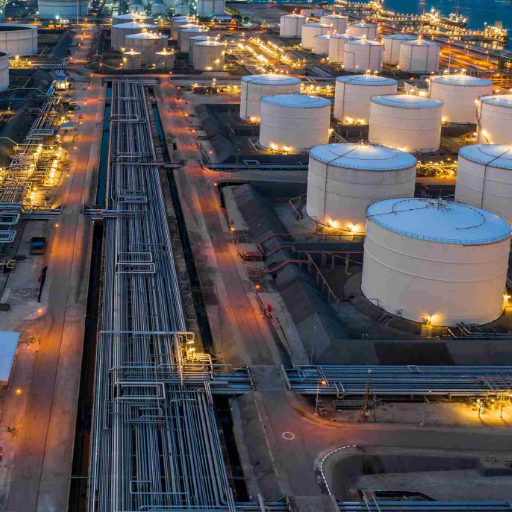
The API 650 standard outlines comprehensive specifications for the design, construction, and maintenance of aboveground storage tanks, ensuring their reliability and safety in storing liquid products. Some of the most critical aspects of these specifications include:
- Tank Dimensions and Capacity
API 650 supports tanks with a capacity ranging from 10,000 gallons to several million gallons. The maximum design height and diameter depend on material strength, foundation design, and operational pressure. This flexibility allows industries to customize tanks for their specific storage needs.
- Construction Materials
The standard specifies that carbon steel, austenitic stainless steel, and aluminum may be used for the construction of tanks. These materials are selected based on properties such as corrosion resistance, durability, and suitability for the stored liquid. Common choices include A36, A283 Grade C, or API 2H steel grades for optimal performance.
- Seismic and Wind Load Considerations
API 650 incorporates provisions for seismic loading, ensuring tanks can withstand earthquakes in seismically active regions. Wind loading calculations are also required for tank stability, with standards ensuring safe operation under high wind conditions, such as coastal or storm-prone areas.
- Corrosion Protection
To extend the lifespan of tanks, API 650 emphasizes the importance of corrosion protection strategies. Specifications include coating systems, cathodic protection, and material selection to prevent internal and external corrosion.
- Welding Requirements
Welded connections are a cornerstone of API 650. The standard sets rigorous requirements for weld types, weld quality, and non-destructive testing (NDT) methods, such as radiographic and ultrasonic examinations, to ensure structural integrity.
- Hydrostatic Testing
Hydrostatic testing is mandatory under API 650 to verify the tank’s ability to safely store liquid under operating conditions. Tanks are filled with water and tested for leaks and structural performance, ensuring compliance with design specifications.
- Roof and Bottom Design
API 650 supports a variety of roof types—including cone, dome, and floating roofs—designed based on the tank’s application. The standard also provides guidelines for tank bottoms, emphasizing durability and resistance to settlement effects.
- Temperature and Pressure Limits
The tanks are primarily designed for contents stored at atmospheric pressure and operating temperatures between -40°F and 500°F. For extreme temperatures, modifications are specified to maintain safety and efficiency.
- Inspection and Maintenance
API 650 includes guidelines for regular inspections and maintenance, focusing on both internal and external evaluations. These inspections help detect early signs of wear, corrosion, or structural issues, minimizing the risk of failures.
The robust specifications of API 650 ensure that aboveground storage tanks meet the highest standards in terms of safety, performance, and adaptability, making them a vital resource in industries ranging from petroleum and chemicals to water and food storage.
Comparison with API 653 and Other Standards
API 650 focuses on new tank construction, API 653 on existing tank maintenance, and API 620 and EN 14015 address specific conditions like high pressure or cryogenic storage.
| Key Point | Details |
|---|---|
|
API 650 |
New tank construction |
|
API 653 |
Maintenance of existing tanks |
|
API 620 |
High pressure, cryogenic storage |
|
EN 14015 |
European tank design standard |
|
Focus |
Safety, durability, and compliance |
Minimum Requirements for Compliance
Some critical aspects for achieving minimum compliance under API 650, thus securing safety and efficiency, must be followed in storage tank operations. Manufacturers of these tanks must comply with standards pertaining to steel composition instance, strength, toughness, and corrosion resistance. Weld joints being a very important factor in tank integrity, meticulous attention must be paid to its design, varying from alignment to quality testing-inclusive of radiographic inspection and ultrasonic testing.
The same standards are expected to be followed in ensuring the foundation possesses the needed stability. Storage tanks must be constructed on fully compacted and leveled foundations so that the weight is evenly distributed, barring settlement. In case of leakage, secondary containment measures such as impermeable liners or bund walls are designed to minimize environmental effects.
Hydrostatic testing is also very essential, in which the tank is filled with water to observe its structural integrity under pressure. This assures a satisfactorily leak-proof tank that can safely accommodate its rated capacity. Taking into consideration the seismic design also demands that a tank located in an area prone to earthquakes shall be designed and constructed with additional reinforcement measures to resist ground motion effects.
Second to inspection and maintenance schedules for keeping ongoing compliance are highly essential. Internal and external inspections shall be carried out periodically, and all findings and repairs shall be fully documented. Having met such stringent criteria ensures industries that their storage tanks perform operationally, environmentally, and in safety-standard-based.
Design and Fabrication of API 650 Storage Tanks
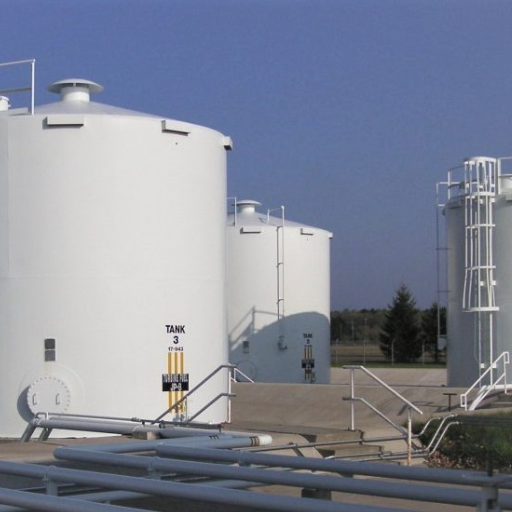
The design and fabrication of API 650 storage tanks are governed by standards set by the American Petroleum Institute. These standards serve the purpose of safeguarding the tanks in terms of safety, reliability, and efficiency. API 650 tanks are intended to be used for storing liquids like crude oil, petroleum products, and chemicals at atmospheric pressure. The design work primarily involves selection of materials of construction, establishing the basic dimensions of the tank, and considering external forces like wind load, seismic forces, corrosion, etc.
Fabrication, on the other hand, consists of welding together steel plates to form the shell, roof, and floor of the tank. Such welds must undergo inspection, and one must be confident of the quality and strength of such welds in compliance with stringent standards. This quality inspection may be either destructive or non-destructive. Non-destructive techniques commonly include radiography or ultrasonic waves. Adhering to API 650 would enable tanks to be well designed for operational requirements as well as environmental safety conditions.
Tank Design Principles
Modern tank design theory emphasizes the incorporation of advanced engineering techniques and newer materials to maximize reliability, efficiency, and safety. A primary consideration in the design of the tank would be the specification of maximum allowable stress under operation, which, in tandem with other parameters, depends on the yield strength of the material selected under specified environmental conditions. Materials like carbon steel, stainless steel, and alloys are selected depending on the stored substances owing to their resistance to corrosion or very high temperatures.
The volume of the tank is calculated very precisely with due consideration given to storage capacity and environmental conditions such as earthquakes and wind pressure at the site of installation. For instance, API 650 stipulates that the external pressure be taken into consideration and provides formulas for the design to ensure that it can resist such pressure. Height-to-diameter ratio is also optimized for cost as well as stability.
Moreover, tanks are often mounted with some of the most efficient emission controls, such as floating roofs or vapor recovery systems, to curb the emission of volatile organic compounds (VOCs) into the atmosphere. This helps sustainability and meets tougher environmental regulations. Internally, corrosion protection is normally offered by way of epoxy lining or cathodic protection systems, whereby protection is provided against corrosion of the tank material, and hence, long life.
Further involved in safety is real-time monitoring brought about by modern designs. This constitutes sensors for pressure and temperature and can also detect leaks. These allow quick remedial measures so that, in the event of irregularities, maintenance can be undertaken, thus minimizing the loss of production caused by an accident. Hence, a proper design for a tank would not only be required for operating efficiency but also for the safeguard of the environment and communities around.
Materials Used in Fabrication
In the fabrication of storage tanks, a key infringement lies in selecting a material depending upon its price and selective attributes of durability, corrosion resistance, and applicability. Carbon steel, stainless steel, and aluminum are materials most commonly used in fabrication. Carbon steel, being inexpensive, is used for non-corrosive substances; stainless steel is extraordinarily resistant to corrosion and durable thus can be used in chemicals and food-grade substances. Aluminum, being light and corrosion-resistant, is mostly used where such properties would be beneficial in handling.
Another area of technical application in fabrication deals with advanced coatings and linings. Epoxy resins and polyurethane coatings are considered the best option in preventing corrosion of the tank and hence cementing a long life into it, further making it compatible with the stored materials. FRP option in storing highly corrosive chemicals or high-grade thermoplastics such as polypropylene is applied. Each of these offers excellent resistance to chemicals and are now gaining markets for industrial applications.
It follows that the research predicts new composite materials to be chosen increasingly in tank fabrication due to their light weight and minimum maintenance. For example, an FRP tank may weigh up to 75% less than a steel tank, thereby greatly decreasing the cost of transportation. Coated/lined tanks can now have considerably longer lives; some coatings have given reliable service for over 20 years even under tough conditions.
The choice of material is finally dictated by what has to be stored therein, under what temperature and pressure conditions, and the local codes it has to comply with. By ensuring the materials used are geared towards the specific service conditions, manufacturers guarantee safe, efficient, and long-lasting tank performance.
Weld Types and Techniques
Welding is fairly crucial in tank manufacturing and repair; thus, the weld type and technique used must be chosen carefully to uphold structural integrity, safety, and durability. Weld types mostly encountered are butt, fillet, groove, and plug welds, with each type applied for specific joints and loading conditions. For example, butt welds are typically employed between two flat surfaces since they provide great strength and almost no discontinuities, while fillet welds are placed at perpendicular joints, providing solid connections in applications of lower demand.
There is the notion that recent developments in welding have contributed to the shortening of tank construction time and to the higher quality of the product. Shielded Metal Arc Welding, Gas Tungsten Arc Welding, and Flux-Cored Arc Welding remain the most popular welding processes today. TIG welding is much appreciated for its ability to accommodate the greatest degree of precision, and thus would be more applicable for use on smaller components and high-end applications, such as in stainless steel tanks. Speed is the main driver behind the use of FCAW in heavy industrial applications.
Recent developments in laser beam welding (LBW) and friction stir welding (FSW) have further pushed the envelope in this field. LBW offers a concentrated, high-energy heat source resulting in much deeper penetration welds with very minimal distortion, thus being apt for thicker metals and automated welding systems. FSW, being a solid-state process, joins two materials without melting, with the added benefit of reduced porosity and improved mechanical properties method being adopted fast for aluminium tanks.
In fact, data-driven analyses and studies have shown that a correct welding application leads to improved performance and an extension of the lifetime of tanks. Tests show a reduction in defect rate of Hybrid Laser Arc Welding technique, compared to traditional techniques, by as much as 40%. Rigorous quality control with non-destructive testing (NDT) methods such as ultrasonic testing and radiographic inspection benefits welds by meeting the most stringent industry requirements, thereby enabling the flawless integrity of tanks in diverse applications.
Applications of API 650 Storage Tanks
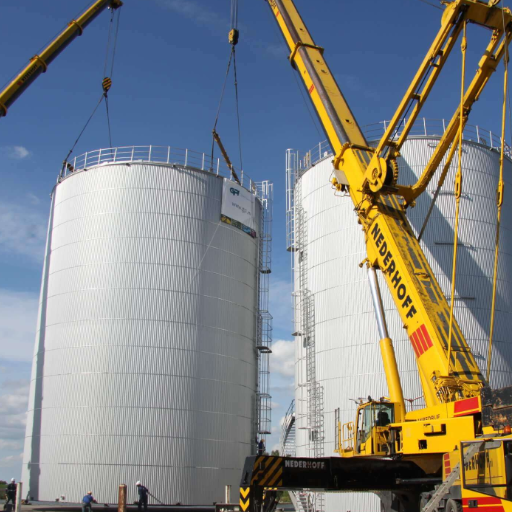
The API 650 tanks for storage find application in most industries for storing liquid products safely and efficiently. Hence, in the oil and gas sector, they store crude oil, refined petroleum products, and chemicals. Furthermore, these tanks find use in water-treatment plants to maintain potable water, wastewater, and other types of fluids. They also find wide applications in agricultural works for storing fertilizers and other agricultural chemicals. Their versatility and durability, along with meeting rigid industry standards, make them very useful in fulfilling liquid storage needs in several applications.
Common Uses in Oil Storage
Oil Storage tanks are necessary to handle and maintain supply chain issues within the oil and gas industry. Such tanks are mainly for storing crude oil, refined petroleum products, or other hydrocarbons at various phases of production, refinement, and distribution. There are different tank designs: fixed roof, floating roof, spherical, and cylindrical, all crafted for different operational needs.
Crude oil storage tanks are generally situated at refineries, pipeline terminals, and oil distribution centers. Industry data assert that, depending on operational requirements, large crude oil tanks may have capacities varying from 1,000 to several millions of barrels. For instance, floating roof tanks are preferred for large-scale storage as they help in minimizing vapor losses and thereby preventing environmental emissions.
Furthermore, oil storage tanks have strategic importance for the conservation of strategic petroleum reserves established in various countries across the world. SPRs help buffer the disruptions in supply caused by market disturbances to assure energy security during periods of crisis. One notable strategic petroleum reserve is in the United States that has an estimated capacity of over 700 million barrels, one of the largest in the world.
In addition, improvements in tank technology and modern storage facilities permit the useful applications of remote monitoring and automation technologies to track tank levels, detect leaks, ensure safety, and adhere to environmental regulations. Thus, the continuous improvement of oil storage ensures that the infrastructure for energy remains intact.
Tank Design for Various Applications
Tank design varies almost infinitely with applications and would consider factors such as the material stored, environment, and operating criteria. Aboveground storage tanks (ASTs) are generally in use for the storage of crude oil, refined products, or chemicals in the oil and gas industry. These tanks are usually fabricated from carbon steel or stainless steel to impart strength and corrosion resistance. The double-walled systems are often incorporated for safety, protection from leakage, or spillage.
For storing water, tanks are made of polyethylene, fiberglass, or concrete, depending on the storage capacity and its water quality requirements. Potable water tanks, in particular, must meet stringent hygienic and sewage standards and use waterproof linings often approved by the FDA to make water safe for human consumption.
Fertilizers, pesticides, and irrigation water are all areas where farming depends heavily on specialized tanks. These tanks are, on the other hand, provided with UV-resistant coating for outdoor use and are chemically resistant in nature.
The newly developed designs of the tanks furthermore include insulation for temperature-sensitive materials such as those for liquid natural gas (LNG) storage that is often conducted at extreme cryogenic temperatures of nearly -260°F, where these tanks feature very sophisticated vacuum insulation systems and have to be designed to withstand high internal pressure.
The global storage tank market is reported to be witnessing a continuous growth stemming from ever-increasing energy requirements and the rising demand for the safe storage of chemicals and water. Modern storage tanks are therefore transforming into intelligent storage tanks, equipped with technology such as level sensors, real-time monitoring, and predictive maintenance systems to encourage efficiency and sustainability in various industries.
Integration with Pressure Vessels
Integration of storage tanks with pressure vessels is an essential part of applications in energy, chemical processing industries, and manufacturing. These integrated systems enable efficient handling of hazardous substances, offer pressure control at precise levels, and allow for storage at high-pressure conditions. Pressure vessels are usually designed for applications where gases or liquids are filled in high pressure to complement storage tanks to safely store and transport these pressurized materials.
According to recent industrial reports, it is forecasted that the worldwide pressure vessel market will top $62.7 billion by 2027 due to the advances in material science and adoption of technologies at a rapid speed. Integration has become even more warranted with features like automated pressure control, construction through high-strength composite materials, and AI-based analytics to predict wear and enable optimal performance. Increasingly, industries are adopting systems that integrate multi-layered storage tanks with sturdy pressure vessels as per stringent safety regulations and energy conservation goals.
Systems designed to serve both storage and pressurization functions appear to be an innovation rapidly gaining acceptance. This versatility minimises downtime and operational costs, thereby increasing efficiency. With integrated solutions, enterprises are also minimising emissions and fulfilling sustainability metrics in line with the increasing global emphasis on green energy and environmental concerns. Together, storage tanks and pressure vessels are making industrial workflows safer, smarter, and greener.
Inspection and Compliance Requirements
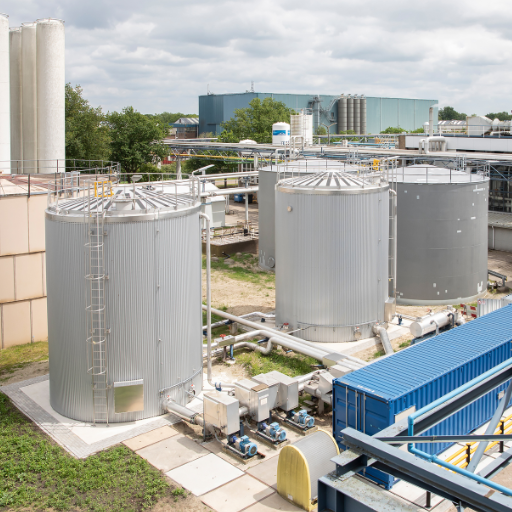
Inspection and compliance requirements for storage tanks and pressure vessels deal mainly with safety, reliability, and regulatory conformity. Regular inspections are required for the detection of any possible defects, failure prevention, and to keep them in a state of operational integrity. Implementation of various technical requirements includes periodical visual inspections, non-destructive testing (with the ultrasonic or radiographic method), and acceptance tests, usually performed following standards through organizations like API or ASME. Proper documentation of the operation during inspections should be maintained through an inspection report and maintenance documentation to prove compliance. These requirements are great for safety but can lessen the legal and financial risks from operations that infringe on a violation.
Inspection Standards for API 650 Tanks
The inspection standards for API 650 tanks include design compliance, welding quality, visual checks, and adherence to API 653 for ongoing maintenance.
| Key Point | Details |
|---|---|
|
Design |
Compliance with API 650 guidelines |
|
Welding |
Clean, defect-free welds |
|
Visual |
Inspection of tank shell and joints |
|
Maintenance |
Follow-up per API 653 standards |
|
Safety |
Ensure operational and environmental safety |
Compliance with EN 14015
Many consider EN 14015as a standard, providing specifications for the design and construction of tanks that are supposed to be vertical, cylindrical, aboveground, welded steel tanks for storing liquids at ambient temperature and above. This standard is basically there to ensure tanks for storage undergo the most rigorous tests from a safety, structural, and operational point of view.
Decisions regarding suitability in material selection, structural integrity, and welding details are some compliance aspects present in EN 14015. For example, tanks must be constructed from material that would resist the particular fluid being stored, with proper emphasis on durability and corrosion resistance. The standard also sets forth fabrication details concerning welding, including weld quality and testing methods; for example, it may require specific welding techniques and non-destructive testing of welds to ensure minimal chance of failure during operation.
To retain conformity through its life cycle, a tank will continuously require inspection and maintenance. Periodical upkeep is mandatory for all tanks designed in line with EN 14015. Detailed tests, including radiographic and ultrasonic tests, are performed to examine and ascertain the tanks’ structural integrity. Those tests, besides ensuring the tank will not leak, secure the environment and lengthen the tank’s lifecycle.
Since EN 14015 provides for operational safety and conforming acceptance, acceptable tanks are very much good to place. Heavy reliance is placed on this standard by companies operating in the petrochemical, chemical, water treatment, and similar industries to meet industry requirements and global safety trends. The promulgation of EN 14015 practices is a promise of achieving technical excellence plus some measure of environmental responsibility.
Importance of Regular Inspection
In general, regular inspection is essential to retaining the safety, operational efficiency, and conformity of tanks constructed in conformance with NM 14015. I consider inspections to be the early identification of issues, such as corrosion or weaknesses within the structure, so they can be fixed in due course before they become big problems. By performing routine checks on the tank, I try to ensure its effectiveness for long years, eliminating hazards in the process, and thereby keeping operational standards at recognized levels of industry and safety.
Reference Sources
-
Liquid Storage Tanks Internal and External Pressure Studies
A dissertation from Purdue University discussing the application of API 650 standards in designing storage tanks under various pressure conditions.
Read more here -
Recent Developments in API Storage Tank Standards
A paper hosted by the EPA archive, covering material, design, fabrication, and testing requirements for aboveground vertical tanks as per API 650.
Read more here
Frequently Asked Questions (FAQs)
What is the API 650 standard for welded steel tanks?
The API 650 standard is a specification developed by the American Petroleum Institute that outlines the requirements for the design, material selection, fabrication, and erection of welded steel tanks used for the storage of various liquids, including crude oil and other petroleum products. It ensures tanks are built to withstand environmental factors and operational stresses.
How are API 650 storage tanks designed?
API 650 storage tanks are designed based on specific requirements that include factors such as design temperature, pressure, and the type of liquid being stored. The design criteria aim to ensure safety, durability, and efficiency in operation, while also adhering to the API standards.
What are the minimum requirements for tanks for oil storage under API 650?
The minimum requirements for tanks for oil storage under API 650 include materials specification, design criteria, and construction practices that meet safety and operational guidelines. This includes considerations for welding procedures and ensuring that tanks can handle pressures up to 2.5 psig.
What is the role of welding in API 650 tank fabrication?
Welding is a critical component of API 650 tank fabrication as it ensures the structural integrity and leak-proof nature of the storage tanks. Proper welding procedures must be followed to comply with the API standard and ensure the longevity and reliability of the welded tanks.
What distinguishes API 650 from API 620?
API 650 and API 620 are both standards for storage tanks, but they serve different purposes. API 650 applies to atmospheric storage tanks designed for low-pressure applications, while API 620 is for tanks designed for low-temperature and high-pressure applications. Understanding the distinctions helps in selecting the appropriate standard for specific tank requirements.
What types of liquids can be stored in API 650 storage tanks?
API 650 storage tanks are primarily designed for the storage of petroleum products, including crude oil and refined fuels. However, they can also be used for other liquids, provided that the materials and design specifications are adhered to, ensuring compatibility with the stored substances.
What are the key considerations in storage tank design and construction?
Key considerations in storage tank design and construction include material selection, design temperature, pressure ratings, welding procedures, and compliance with API standards. Additionally, factors such as site location, environmental conditions, and regulatory requirements must also be taken into account to ensure safety and functionality.
How does the erection process of API 650 tanks work?
The erection process of API 650 tanks involves several steps, including site preparation, assembly of tank components, and welding of the structure. It is crucial to follow strict guidelines during erection to ensure that the tank is built safely and meets all design specifications, enabling it to function effectively for oil storage.



